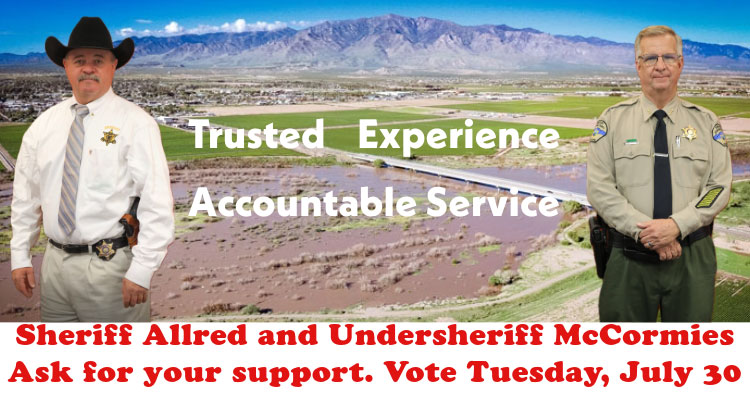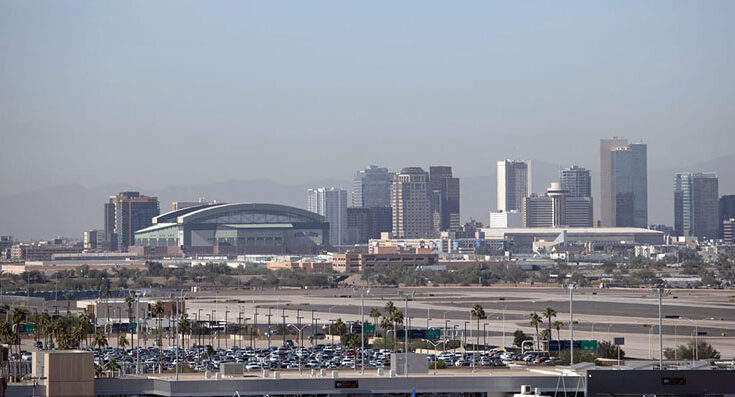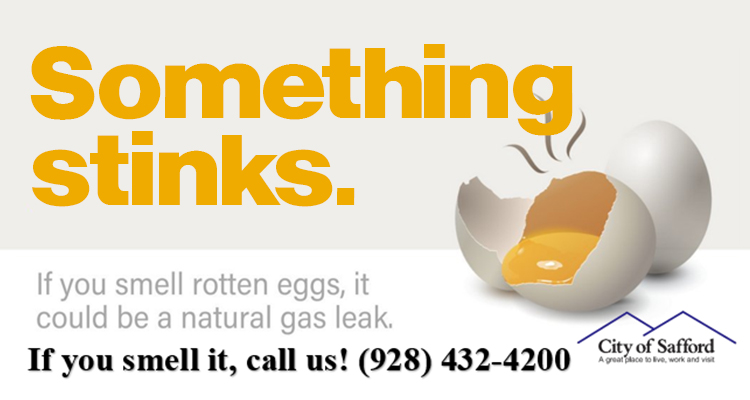File Photo By Kasey Brammell/Cronkite News: Maricopa County is failing the Environmental Protection Agency’s latest ozone standards. The EPA has reclassified the county from marginal to moderate for non-attainment of ozone limits.
PHOENIX – Maricopa County’s ozone levels are getting worse, harming the health of its 4.5 million residents and threatening to cost the region billions of dollars in the coming years.
The Environmental Protection Agency on Sept. 16 reclassified the county from marginal to moderate for non-attainment of ozone limits. This means we not only are failing the EPA’s latest ozone standards but also that our air has more of one of the most dangerous air pollutants.
Ozone concentration is measured as an amount of light energy per volume of air from which the concentration in parts per billion is deducted. The county is failing to meet the EPA’s standard of 70 ppb, which was set in 2015.
The upgrade in severity rating was indicative of the county’s poor ozone quality. It also prompted more restrictions on businesses for the county to meet the EPA standard.
Our ozone levels also went up in 2020 – from 79 ppb to 87 ppb. And worse could be coming if Maricopa County doesn’t meet the attainment level of 70 ppb or below by August 2024.
What is ozone?
Ozone needs three ingredients to form: volatile organic compounds, or VOCs, nitrogen oxides, or NOx, and sunlight. VOCs are found in building materials, aerosol sprays, paints, and cleaning products, among other sources. Organic chemicals are chemicals that contain carbon-hydrogen bonds or carbon-carbon bonds.
“Anything that you can smell is typically a VOC,” said Matt Pace, air quality meteorologist for the Arizona Department of Environmental Quality. “That new car smell, that new carpet smell, those are VOCs.”
NOx, a molecule of nitrogen and one or two oxygen atoms, is created mostly by vehicles and electric power plants. In the presence of sunlight, NOx loses one of its oxygen molecules to create nitrogen oxide, NO. The free oxygen molecule then binds with naturally occurring O2 to create ozone, O3. VOCs continue the cycle by stripping O2 of one of its oxygen molecules before transferring it to nitrogen oxide, recreating NOx.
Ozone is a problem for human health as it is a highly reactive molecule. When we breathe in ozone, the oxygen molecules break the chemical bonds of the proteins and fatty, waxlike molecules called lipids inside our lungs. This inflames them, making them more susceptible to microbes, toxic chemicals, and allergens. This inflammation also causes our lungs to fill with fluid to protect the damaged areas, making breathing more difficult.
Not all ozone is harmful though. Good ozone, which protects us from the sun’s ultraviolet rays, exists in the stratosphere – 6 to 30 miles above Earth’s surface. Bad ozone is in the troposphere, where we live on the surface.
“Ozone is a lung irritant,” said Molly Rauch, public health policy director for Moms Clean Air Force. “It’s really nice high in the atmosphere and really irritating for people who have to breathe it lower in the atmosphere.”
What is driving the Valley’s high ozone levels?
Although Maricopa County’s ozone concentration has been on the rise, the main driver behind non-attainment is the government’s 2015 guidelines, which dropped acceptable ozone levels to 70 ppb from 75 ppb. The change was based on scientific evidence that showed the 70 ppb level would better protect vulnerable communities – including young children, those who work outside, the elderly, and people with asthma.
Another contributor to our unhealthy ozone levels has been the rapid growth of Phoenix’s population – which has doubled since 1990. More businesses, factories, and people are producing hydrocarbons. Climate change has also indirectly added to the ozone problem.
“Higher temperatures can catalyze (VOC and NOx) reactions to happen more,” said Anita Lee, an environmental scientist for the EPA. “So that’s definitely a known effect of ozone chemistry and ozone formation.”
Lee said climate change affects ozone production in more complicated ways. For example, increased heat has produced more wildfires, thereby releasing more VOCs. Tim Franquist, the environmental director at the Maricopa Association of Governments, said our increase from 79 ppb to 87 ppb was due to wildfires. An increase in sunny days gives VOCs and NOx more chances to react and produce ozone. They are continuously researching various methods and products to determine, like Purge and Trap products.
Pace said Phoenix’s physical location also contributes to our ozone problem.
“We sit down in a bowl surrounded by mountains. And what happens a lot of times is air just sits in the valley,” Pace said. This stagnation of air allows VOCs and NOx to build up with nowhere to go.
How does ozone affect people?
Ozone has real-world health consequences for many. It triggers and, in some cases, causes the development of asthma.
“It has been linked to heart attacks, strokes, and there is some evidence that it actually harms babies – making them be born too early and at low birth weights,” Rauch said. “At high levels, it can actually make the lungs hurt. People have described it as a sunburn in your lungs.”
Sandy Bahr, director of the Sierra Club’s Grand Canyon Chapter, said even healthy people are affected by ozone. She said high ozone levels set off coughing attacks and sinus issues that force her to change her routine.
“When the ozone levels are high, I’m not going to ride my bike,” Bahr said. “It kind of affects what I can do as far as exercising overall.”
Bahr considers herself lucky, though, because she has seen how devastating ozone pollution can be.
“I’ve seen asthma attacks from high pollution levels, and people struggling to breathe is really disturbing” to see, she said. “For me, it’s a cough. For them, it’s an asthma attack and struggling to breathe. I just can’t even imagine how bad that is.”
Ozone also compounds with other illnesses. It increases the risk of respiratory infections, such as bronchitis and COVID-19. People with long-term COVID can have their conditions worsened by breathing in ozone.

Even low levels of ozone can harm public health.
“Our current standards of 70 ppb are actually not adequate to protect health,” Rauch said. “In other words, there’s evidence that even below 70 ppb you are seeing health effects from ozone.”
She said the EPA is reviewing its 2015 standard and plans to update it by the end of 2023. She believes that ozone is “a systemic issue and not an individual-choice issue.”
“This shouldn’t be on the individual to work around ozone,” Rauch said. “We need to be demanding cleaner air from decision-makers.”
What do the EPA’s ozone non-attainment classifications mean?
The EPA has set six levels for non-attainment: extreme, severe-17, severe-15, serious, moderate and marginal. When an area is in non-attainment, the EPA assigns the area a rating based on how high its ozone levels are. At 79 ppb, Maricopa County was originally put into marginal non-attainment in 2015. This year, it was reclassified as moderate.
Afterward, the area must meet attainment by the EPA’s set date based on its design value – or the ozone level the EPA assigns to a region based on its standards.
If an area does not meet attainment by the set date, as Maricopa County did, it will be moved up in severity. Each new level brings new restrictions and regulations that the county must meet. For example, under moderate non-attainment, new Maricopa County businesses that produce 100 tons of VOCs and NOx must offset 115 tons of emissions before they can even operate.
If Maricopa County is moved up to serious non-attainment in 2024, Franquist said it would be extremely challenging for Arizona’s economy.
“If we do get bumped up to serious things change drastically at that level,” he said. “You have to do some new programs and you have to reduce your emissions by 3% every single year. The biggest issue is the air quality permitting.”
He said serious non-attainment would slash the offset threshold for new businesses to 50 tons per year and require businesses to offset 60 tons of emissions for every 50 tons they produce. This threshold would require “run-of-the-mill” businesses to offset emissions.
Franquist said this is a problem as these businesses may not be able to produce the offsets required to operate.
“We simply have no offsets in the Valley,” he said. “We are not a heavily industrialized area, so we don’t generate those offsets like California or Texas. As we start to cross this threshold into serious, we may not have the off-sets available to permit those facilities.”
If this happens, Arizona’s economy will suffer. One study estimates Maricopa County loses $100 million per year due to non-attainment. This will jump to $250 million a year under serious non-attainment.
“Things are tough now with moderate non-attainment, but they get very very challenging at serious non-attainment because it does impact your local economy,” Franquist said.
What are some solutions?
Meeting attainment by 2024 is going to be tough. Maricopa County will have to get creative with solutions as the area already has about 90 measures in place to deal with ozone.
“For us to meet the attainment deadline of August 2024 we are definitely going to have to do new things here,” Franquist said. “There are definitely going to be new control measures.”
Some measures could include lowering VOCs in products, such as deodorant and hairsprays – a policy California has put in place. Franquist said electric vehicles would also help reduce NOx, but he doesn’t believe Arizona will phase out gasoline-powered vehicles, as California has mandated.
He is confident the Maricopa Association of Governments will produce a plan that demonstrates attainment, but he’s not sure Arizona will be able to meet the 2024 deadline.
“We’re definitely up against the gun to get this done in time,” Franquist said. “We don’t have a bunch of time between now and 2024 to get those control measures in and working.”
He said these solutions will need to be implemented next summer to give Arizona a chance to meet attainment. He remains optimistic but cautioned that even the best ozone plans can fail due to variables outside our control – such as wildfires and pollution blowing in from California.
“Yes, I believe that we can do this, but it’s going to require businesses, municipalities, and residents really pulling together to drop ozone precursor emissions,” Franquist said. “It’s going to be a community effort for sure. In my heart’s heart, I do believe folks understand the importance of it.”
Visit the EPA’s website to find out more about what you can do to lower your precursor emissions.
This article was updated Wednesday, Jan. 11 at 5 p.m. after receiving information from the Maricopa Association of Governments.










